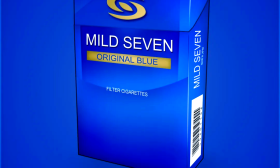Title: The Sticky Truth: How Tobacco Use Increases Nasal Discharge Viscosity in Chronic Rhinitis
Chronic rhinitis, a persistent inflammation of the nasal mucous membranes, afflicts millions worldwide with symptoms like congestion, sneezing, and notably, rhinorrhea—excessive nasal discharge. While often dismissed as a mere nuisance, the characteristics of this discharge, particularly its viscosity (thickness and stickiness), are crucial indicators of nasal health and patient comfort. A growing body of evidence points to a significant and modifiable environmental factor that drastically alters this characteristic: tobacco use, both active and passive. This article delves into the mechanistic pathways through which tobacco smoke exposure elevates the viscosity of nasal discharge in individuals with chronic rhinitis, exacerbating symptoms and complicating management.
Understanding Nasal Discharge and Its Purpose
Normally, the nasal mucosa is lined with ciliated pseudostratified columnar epithelium and goblet cells, which together produce mucus. This mucus is a complex hydrogel composed of water, salts, glycoproteins (mucins), lipids, and antimicrobial proteins. Its primary functions are to humidify inhaled air, trap pathogens, allergens, and particulate matter, and facilitate their removal via the coordinated beating of cilia—a process known as mucociliary clearance. The ideal mucus has a balanced viscosity: fluid enough to be propelled easily but viscous enough to effectively capture invaders. In chronic rhinitis, this balance is disrupted, often leading to either excessively watery or, crucially, overly thick and stagnant mucus.
Tobacco Smoke: A Complex Chemical Insult
Tobacco smoke is not a single entity but a dynamic mixture of over 7,000 chemicals, including nicotine, tar, carbon monoxide, formaldehyde, and numerous other irritants and carcinogens. When inhaled, this noxious cloud directly bathes the nasal mucosa, initiating a cascade of pathological changes.
1. Goblet Cell Hyperplasia and Metaplasia: The Overproduction of MucinsA primary driver of increased viscosity is the alteration in the very producers of mucus: the goblet cells. Studies have consistently shown that exposure to tobacco smoke acts as a chronic irritant, triggering goblet cell hyperplasia (an increase in the number of cells) and metaplasia (a change in cell type to a more mucus-secreting form). This results in a dramatic upregulation in the production and secretion of mucins, specifically gel-forming mucins like MUC5AC. While the quantity of mucus increases, the critical ratio of water to mucin is thrown off. The mucus becomes a denser network of these large, polymeric glycoproteins, leading directly to increased viscoelasticity and thickness.
2. Impaired Ciliary Function and DehydrationFor mucus to be effectively cleared, it must be hydrated. Tobacco smoke severely compromises this aspect. The heat and toxic chemicals in smoke have a paralyzing and destructive effect on the cilia. Damaged cilia beat less frequently and with poor coordination, stalling the transport of mucus. Furthermore, smoke exposure can disrupt the ion channels on the epithelial surface responsible for regulating water secretion into the mucus layer. This leads to relative dehydration of the mucus gel. Imagine adding flour to a sauce without increasing the liquid; it becomes a thick, stubborn paste. Similarly, the mucus, now richer in mucins and poorer in water, becomes highly viscous and difficult to clear.

3. The Inflammatory Cascade and DNABeyond direct structural damage, tobacco smoke is a potent instigator of inflammation. It activates nasal epithelial cells and resident immune cells to release a storm of pro-inflammatory cytokines, such as interleukin-4 (IL-4), interleukin-13 (IL-13), and tumor necrosis factor-alpha (TNF-α). This inflammatory milieu further stimulates goblet cell secretion and promotes the influx of inflammatory cells like neutrophils. Neutrophils, in their attempt to fight the irritant, release neutrophil extracellular traps (NETs)—webs of DNA and antimicrobial proteins. While defensive, these NETs significantly contribute to the physical properties of mucus. Extracellular DNA is a known polymer that greatly increases the viscosity and adhesiveness of sputum in conditions like cystic fibrosis and chronic obstructive pulmonary disease (COPD). The same process occurs in the nasal passages, where DNA from neutrophils interlaces with mucins, creating a dense, tenacious network that is exceptionally difficult to expel.
4. Oxidative Stress and Mucus ModificationThe high concentration of free radicals and oxidative compounds in tobacco smoke induces significant oxidative stress within the nasal mucosa. This oxidative environment can directly alter the mucin proteins themselves, potentially leading to cross-linking or other biochemical modifications that increase the stiffness and viscosity of the mucus gel. Antioxidant defenses in the nasal lining are depleted, allowing this damaging process to continue unabated with each exposure.
Clinical Implications and Patient Experience
For the patient with chronic rhinitis who smokes or is exposed to secondhand smoke, these physiological changes translate into a markedly worsened quality of life. The hyperviscous nasal discharge is notoriously difficult to expel. Patients often experience:
- Persistent nasal congestion and blockage: Thick mucus physically obstructs the nasal airways.
- Post-nasal drip: The thick discharge drips down the back of the throat, causing chronic throat clearing, coughing, a sensation of a lump in the throat (globus pharyngeus), and even halitosis.
- Reduced efficacy of treatments: Nasal saline irrigations may struggle to break up the thick mucus. Topical corticosteroid sprays, the mainstay of rhinitis treatment, may have limited efficacy as the viscous layer prevents proper penetration of the drug to the underlying epithelium.
- Increased risk of complications: Stagnant, thick mucus is an ideal breeding ground for bacteria, increasing the frequency and severity of secondary bacterial sinusitis (acute or chronic rhinosinusitis).
Conclusion
The link between tobacco smoke and worsened chronic rhinitis is undeniable and mechanistically clear. Through a multi-pronged attack involving goblet cell stimulation, ciliary damage, mucosal dehydration, profound inflammation, and oxidative stress, tobacco smoke fundamentally alters the biophysical properties of nasal discharge, rendering it hyperviscous and dysfunctional. This "sticky truth" underscores that smoking cessation and avoidance of secondhand smoke are not merely general health advice but are critical, targeted therapeutic interventions in the management of chronic rhinitis. For patients struggling with thick, relentless nasal discharge, eliminating exposure to tobacco smoke may be the single most effective step toward restoring the natural balance of their nasal ecosystem and achieving meaningful symptom relief.
Tags: #TobaccoSmoke #ChronicRhinitis #NasalHealth #MucusViscosity #GobletCells #MucociliaryClearance #ENT #HealthScience #Inflammation #SmokingCessation









